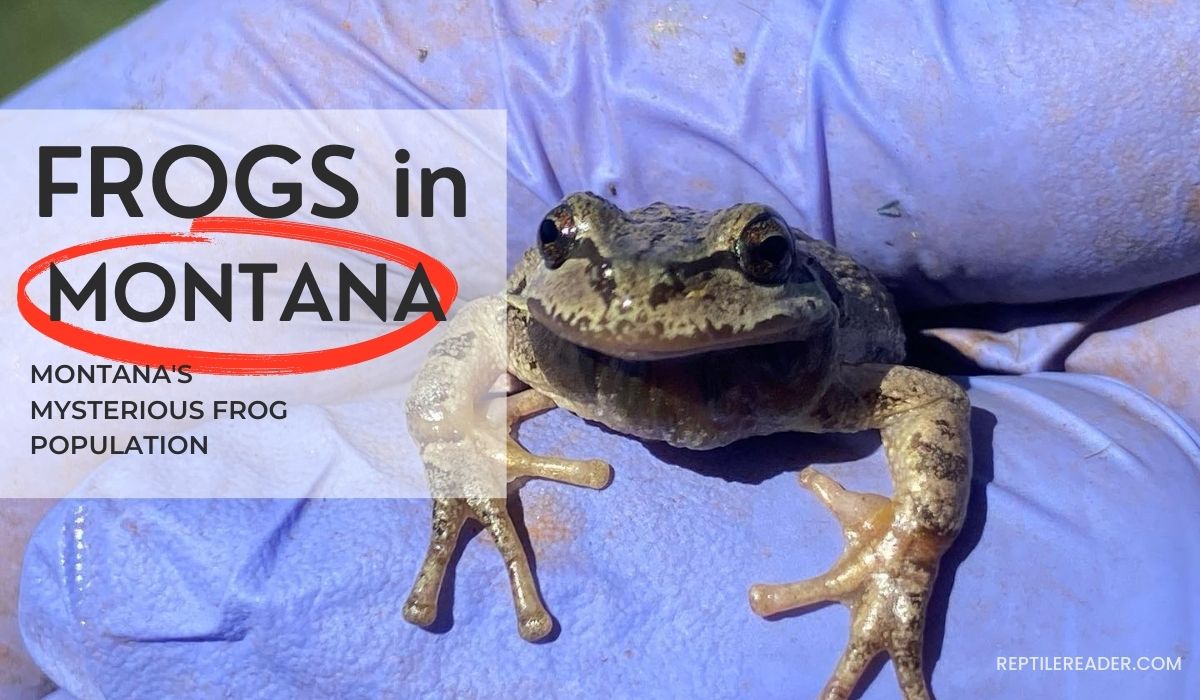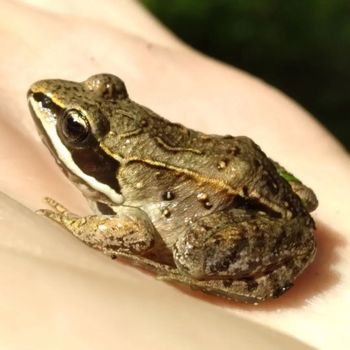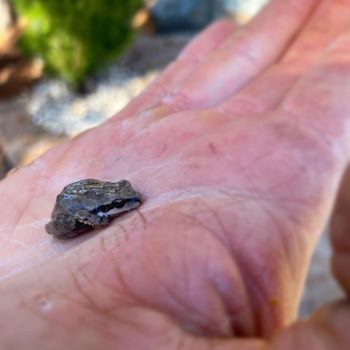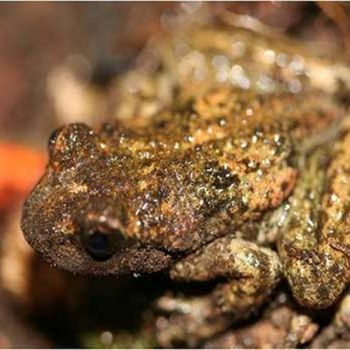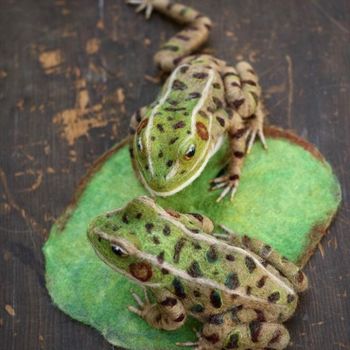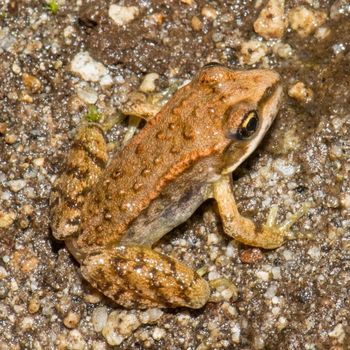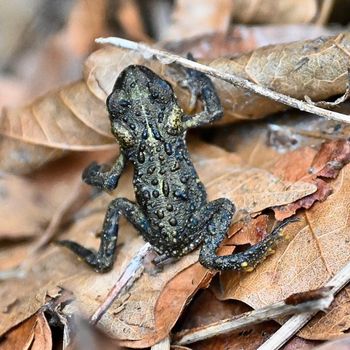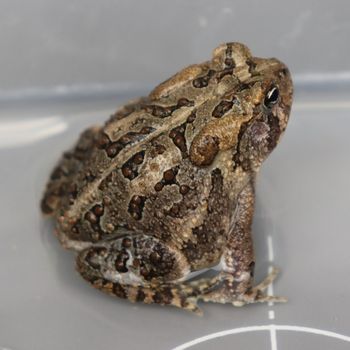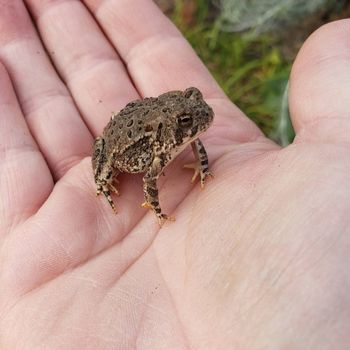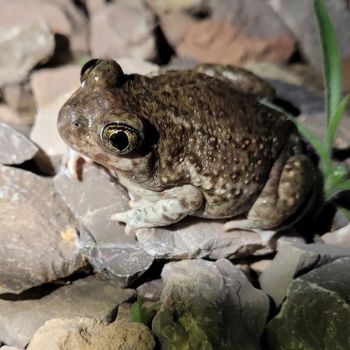Frogs in Montana: Montana’s Mysterious Frog Population
I don’t know about you, but I just can’t get enough of these fascinating amphibians, especially when they hail from my beloved Big Sky Country. Did you know there are actually 10 different species of frogs that call Montana home?
Now, that might not sound like a lot when you consider the world is home to over 7,000 species of frogs, but each one found in Montana is just as unique and captivating as the next.
So, let’s hop right into it (pun intended) and take a closer look at the wonderful world of Montana’s froggy inhabitants. Ready to meet these amazing amphibians? Read on, my friends!
| # | Name | Details | Image |
| 1 | Boreal Chorus Frog (Pseudacris maculata) |
| 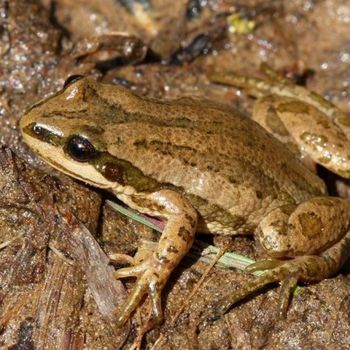 |
| 2 | Sierran Tree Frog (Pseudacris sierra) |
| 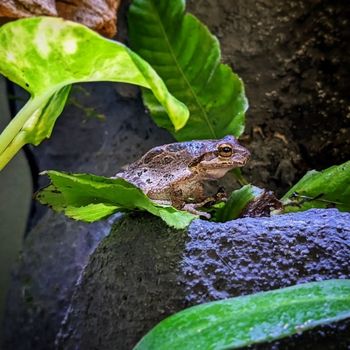 |
| 3 | Rocky Mountain Tailed Frog (Ascaphus montanus) |
| 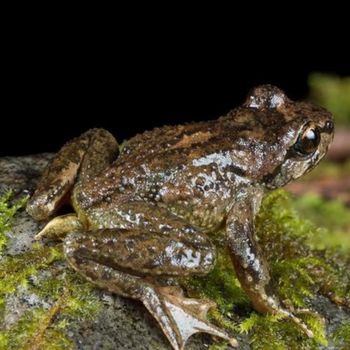 |
| 4 | American Bullfrog (Lithobates catesbeianus) |
| 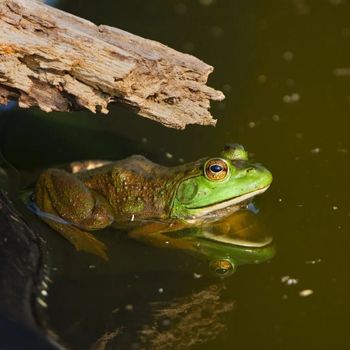 |
| 5 | Northern Leopard Frog (Rana pipiens) |
| 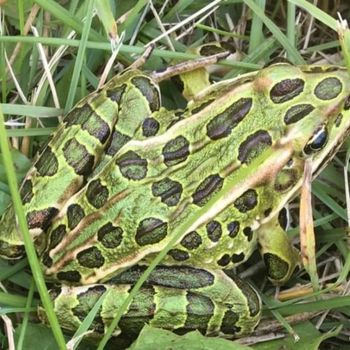 |
| 6 | Columbia Spotted Frog (Rana luteiventris) |
| 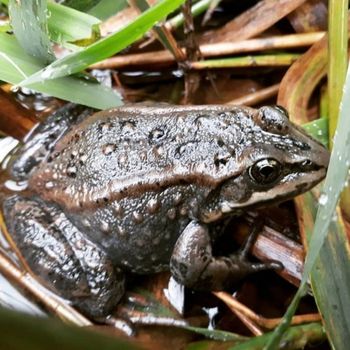 |
| 7 | Western Toad (Bufo boreas) |
|  |
| 8 | Great Plains Toad (Anaxyrus cognatus) |
| 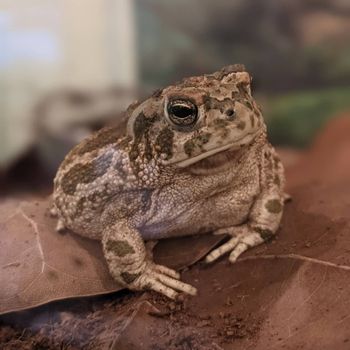 |
| 9 | Woodhouse’s Toad (Anaxyrus woodhousii) |
|  |
| 10 | Plains Spadefoot Toad (Spea bombifrons) |
| 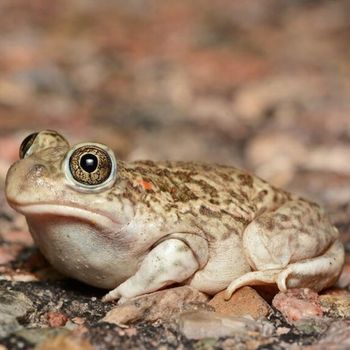 |
Are the Frog Species Found in Washington Also Present in Montana?
Montana shares some amphibian species with Washington, but not all of washington’s diverse species of frogs are present. While both states host a variety of frogs, Washington’s distinct ecosystems, such as coastal rainforests, contribute to unique species that Montana’s drier climate may not support.
Are Vermont’s Frog Varieties Similar to those Found in Montana?
While both Vermont and Montana are home to various frog species, their habitats and climates contribute to distinct differences. Vermont’s vibrant and lively frog species thrive in wetter and more temperate environments, whereas Montana’s frogs adapt to more rugged terrain, leading to unique adaptations in each region’s amphibians.
10 Frog Species You Can Find in Montana
Get ready to dive deep into the lives of 10 incredible frog species that call Montana their home, showcasing their unique adaptations and remarkable behaviors.
1. Boreal Chorus Frog
- Scientific Name: Pseudacris maculata
- Common Name: Boreal chorus frog
- Size: 0.8-1.6 inches (2-4 cm)
- Color & Pattern: Gray, brown or green with dark stripes on the back and sides
- Natural Habitat: Marshes, grasslands, wet meadows
- Geographic Range: Northwestern united states and canada
- Diet: Small insects, spiders, and other invertebrates
- Reproduction: Breeds in shallow water, lays eggs attached to vegetation
- Vocalization: Series of ascending, short trills
- Adaptation: Able to change color for camouflage, strong climbers
- Conservation Status: Least concern
Hidden in the marshes, grasslands, and wet meadows of northwestern United States and Canada, the small creature with a big voice, the Boreal Chorus Frog, thrives. Although diminutive in size, measuring only 0.8-1.6 inches, their distinct colors and patterns of gray, brown, or green with dark stripes on the back and sides allow them to stand out in their environment. Pseudacris maculata, as they’re known in the scientific community, have an impressive ability to change their color for camouflage and are remarkable climbers.
Surviving primarily on small insects, spiders, and other invertebrates, these talented amphibians lay their eggs attached to vegetation in shallow water, filling the surrounding area with a series of ascending, short trills to establish their presence. Fascinatingly, these frogs have developed concentrated antifreeze proteins that allow them to endure freezing temperatures – a vital adaptation in their often chilly habitat.
Fortunately, the conservation status of this Montana resident is deemed the least concern due to their versatile adaptations and stable population, ensuring these interesting creatures remain an essential part of their ecosystem.
2. Sierran Tree Frog
- Scientific Name: Pseudacris sierra
- Common Name: Sierran tree frog
- Size: 1-2 inches (2.5-5 cm)
- Color & Pattern: Green, grey, or reddish-brown with dark irregular spots
- Natural Habitat: Grasslands, woodlands, wetlands, near streams and ponds
- Geographic Range: Western north america (california, oregon, nevada)
- Diet: Insects, spiders, small invertebrates
- Reproduction: Eggs are laid singly or in small groups in shallow water
- Vocalization: Males emit a nasal, raspy “reek” or “krit” call during mating season
- Adaptation: Excellent camouflage, expandable vocal sac for vocalizations
- Conservation Status: Least concern
Measuring a tiny 1-2 inches, this minuscule master of disguise can change its color between green, grey, or reddish-brown and sports dark irregular spots, expertly blending into its surroundings. With an expansive range spanning California, Oregon, and Nevada, you can find these agile amphibians hopping around grasslands, woodlands, wetlands, and near streams and ponds.
These voracious little creatures feed on a varied diet, including insects, spiders, and other small invertebrates. As for their own life cycle, the Sierran Tree Frog lays its eggs singly or in modest groups submerged in shallow water. Males get quite vocal during the mating season, emitting a nasal, raspy “reek” or “krit” call, thanks to an expandable vocal sac.
Interestingly, Sierran Tree Frogs are quite the survivalists. Besides their adaptive color-changing abilities, they are also known to hibernate under logs or in rodent burrows. Currently, their conservation status is of least concern, which means these fascinating little frogs are thriving and continue to grace the western North American landscape with their presence.
3. Rocky Mountain Tailed Frog
- Scientific Name: Ascaphus montanus
- Common Name: Rocky mountain tailed frog
- Size: 1-2 inches (2.5-5 cm)
- Color & Pattern: Brown, gray, or green with darker mottling or spots
- Natural Habitat: Cold, clear, rocky streams in mountainous regions
- Geographic Range: Northern idaho, montana, and northeastern washington
- Diet: Aquatic insects like mayflies, stoneflies, and small invertebrates
- Reproduction: Internal fertilization, female lays eggs under rocks in streambeds
- Vocalization: Males do not have vocalizations
- Adaptation: Tailed frog tadpole has unique oral disc for grazing algae on rocks, adults have unique “tail” or sperm delivery
- Conservation Status: Least concern
Often found hiding within the cascading waters of northern Idaho, Montana, and northeastern Washington is the enchanting Rocky Mountain Tailed Frog (Ascaphus montanus). Wrapped in a cloak of varying shades like brown, gray, or green with darker mottling or spots, these 1-2 inch beings are a tribute to the oldest frog lineage that dates back 150 million years ago.
Their fascinating features include the presence of a unique ‘tail’ that aids in sperm delivery and a special oral disc found only in tailed frog tadpoles, meant for grazing algae on rocks. These timeless creatures thrive in cold, clear, rocky streams of mountainous regions while sustaining themselves on aquatic insects, mayflies, stoneflies, and other small invertebrates. Stealthily laying their eggs under rocks within streambeds in Montana, these frogs embody the essence of the wild, where males exercise silence, seemingly in reverence to the circles of life.
Presently, their conservation status is not under threat, and nature lovers can revel in the knowledge that the Rocky Mountain Tailed Frog continues to thrive in its pristine alpine homes. Secrets whispered by water currents carry the tales of these ancient beings, reminding us that nature’s history is etched in the smallest of its inhabitants.
4. American Bullfrog
- Scientific Name: Lithobates catesbeianus
- Common Name: American bullfrog
- Size: 3.5-6 inches (9-15 cm)
- Color & Pattern: Green to brown with dark spots and patterns
- Natural Habitat: Ponds, lakes, marshes, slow-moving streams
- Geographic Range: Eastern and central united states, canada, mexico, introduced worldwide
- Diet: Fish, crustaceans, insects, small mammals, birds, other amphibians
- Reproduction: Breeds in aquatic habitats, lays eggs in flat surfaces on water
- Vocalization: Deep, low-pitched calls by males during breeding
- Adaptation: Highly adaptable, strong legs for jumping and swimming
- Conservation Status: Least concern
Immerse yourself in the world of the American Bullfrog (Lithobates catesbeianus), a striking amphibian with a size ranging from 3.5 to 6 inches (9-15 cm). Adorned in a rich palette of green to brown, they exhibit dark spots and patterns which serve as excellent camouflage within their habitat. These aquatic creatures can leap and swim with grace and strength, due to their powerful legs.
Dwelling in the eastern and central United States, Canada, Mexico, and various regions around the world, they call ponds, lakes, marshes, and slow-moving streams their home. They satiate their hunger with a diverse diet of fish, crustaceans, insects, small mammals, birds, and other amphibians. The American Bullfrog is even known to be cannibalistic, predating on native species in introduced areas.
During breeding season, male Bullfrogs exclaim deep, low-pitched calls to attract mates, resulting in them laying their eggs in flat surfaces on the water for successful reproduction. Despite being a significant predator, their conservation status remains of least concern and they continue to thrive, showcasing their impressive adaptability. Delve deeper into the world of this fascinating amphibian, and uncover more about its unique quirks and captivating existence.
5. Northern Leopard Frog
- Scientific Name: Rana pipiens
- Common Name: Northern leopard frog
- Size: 2.0-4.3 inches (5.1-11 cm)
- Color & Pattern: Green or brown with dark spots circled by a lighter border
- Natural Habitat: Marshes, swamps, grasslands, wetlands
- Geographic Range: Canada and the united states (alaska to new mexico)
- Diet: Insects, spiders, small crustaceans, other invertebrates
- Reproduction: Breeds in shallow, well-vegetated freshwater habitats, lay eggs in clusters attached to vegetation
- Vocalization: Snore-like call by males during breeding
- Adaptation: Long, powerful legs for jumping, partially webbed hind feet for swimming
- Conservation Status: Least concern
These captivating creatures are perfectly suited for life in marshes, swamps, grasslands, and wetlands, stretching from Alaska to New Mexico in North America. Their partially webbed hind feet allow them to swim gracefully, while their long, powerful legs support impressive jumping abilities.
With a main diet of insects, spiders, small crustaceans, and other invertebrates, these voracious eaters keep their habitats in Montana lively. During breeding season, these frogs settle in shallow, well-vegetated freshwater habitats, and females lay eggs in clusters attached to vegetation. To attract a mate, male frogs serenade their companions with a unique, snore-like vocalization.
Remarkably, the Northern Leopard Frog is capable of surviving being frozen, an unparalleled adaptation contributing to their classification as “Least Concern” in conservation statuses. However, it is worth noting that habitat loss may lead to a decline in future populations. Overall, these fascinating frogs continue to enchant us with their beauty, resilient nature, and captivating behaviors.
6. Columbia Spotted Frog
- Scientific Name: Rana luteiventris
- Common Name: Columbia spotted frog
- Size: 1.5-4 inches (3.8-10 cm)
- Color & Pattern: Black, brown or green with irregularly shaped spots
- Natural Habitat: Wetlands, streams, lakes, ponds
- Geographic Range: Western north america (alaska to nevada)
- Diet: Aquatic insects, spiders, small invertebrates
- Reproduction: Breeds in quiet ponds, lays eggs in clusters attached to vegetation
- Vocalization: Low-pitched, rapid chuckling or clicking call by males during breeding
- Adaptation: Explosive jump for escape, webbing on hind feet for swimming
- Conservation Status: Least concern
From Alaska to Nevada, you’ll find these small amphibians – ranging from 1.5 to 4 inches in size – leisurely residing in wetlands, streams, lakes, and ponds. Their diet primarily consists of aquatic insects, spiders, and other small invertebrates hiding in their watery abodes.
Males of this elusive species serenade their female counterparts with low-pitched, rapid chuckling or clicking calls during breeding. You’ll find their eggs in clusters attached to vegetation within the serene waters of quiet ponds. Keep an eye out for their astonishing explosive jumps for escape, and watch them gracefully swim using the webbing on their hind feet – natural adaptations serving their survival in aquatic habitats.
Did you notice a flash of red or orange on the frog’s belly? That’s a distinctive feature of the Columbia Spotted Frog. Not only visually striking, but these little frogs are also essential to our understanding of wetlands, as they serve as a habitat indicator species. Although their conservation status is currently “least concern,” let’s celebrate and protect these incredible, vibrant creatures and the vital habitats they call home.
7. Western Toad
- Scientific Name: Bufo boreas
- Common Name: Western toad
- Size: 3-5 inches (7.6-12.7 cm)
- Color & Pattern: Brown, gray, green, or olive with dark blotches; light dorsal stripe
- Natural Habitat: Forests, meadows, wetlands, and grasslands
- Geographic Range: Western north america (from alaska to mexico)
- Diet: Insects, spiders, worms, small invertebrates
- Reproduction: Breeds in freshwater habitats, lays eggs in long strings
- Vocalization: Low-pitched short trills by males during breeding
- Adaptation: Glands secrete toxin, can breed in ephemeral ponds
- Conservation Status: Near threatened
This small yet fascinating creature ranges from 3 to 5 inches in size, boasting a captivating palette of brown, gray, green, or olive hues, adorned with dark blotches and a striking light dorsal stripe. Their nocturnal nature adds a certain air of mystery, as they dig burrows and hibernate during the biting winter months.
Making their homes in forests, meadows, wetlands, and grasslands, these toads have claimed an extensive territory spanning western North America—from the frosty expanse of Alaska to the sun-soaked stretches of Mexico. Known for their carnivorous appetite, Western Toads feast on insects, spiders, worms, and other small invertebrates, ensuring a balanced ecosystem in their diverse habitats. The low-pitched short trills of males during breeding season prove they are nothing if not romantic.
These fascinating creatures have uniquely adapted to their environment; glands in their skin secrete a powerful toxin to ward off predators, and their ability to breed in ephemeral ponds showcases their resilience. However, Western Toads are currently considered near threatened, emphasizing the need for diligent conservation efforts. Their captivating story serves as a stark reminder for us to appreciate the beauty and complexity of the wild.
8. Great Plains Toad
- Scientific Name: Anaxyrus cognatus
- Common Name: Great plains toad
- Size: 3-4.5 inches (7.5-11.4 cm)
- Color & Pattern: Green or brown with dark blotches; a white stripe down the center of the back
- Natural Habitat: Grasslands, sagebrush, floodplains
- Geographic Range: Central north america (southern canada to mexico)
- Diet: Insects, spiders, small invertebrates
- Reproduction: Breeds in temporary pools, lays eggs in long strings
- Vocalization: Multi-trill call by males during breeding
- Adaptation: Thick skin to minimize water loss, explosive breeding during rains
- Conservation Status: Least concern
The fascinating Anaxyrus cognatus, commonly known as the Great Plains Toad, boasts a captivating appearance with its distinct green or brown hues and dark blotches adorning its 3-4.5-inch body. This charming creature also features a striking white stripe running down the center of its back, making it a truly captivating sight in the wild.
Roaming across the vast grasslands, sagebrush, and floodplains of Central North America, these captivating amphibians have an insatiable appetite for insects, spiders, and small invertebrates. The alluring melodies of their multi-trill calls echo through the air, as males serenade their potential mates during breeding season in temporary pools where they lay their eggs in long strings.
Notable for their thick skin, designed to minimize water loss, the Great Plains Toad adapts to its environment by employing explosive breeding during rains and burrowing in the soil to aestivate during dry periods. With a current conservation status of “Least Concern,” we can continue to marvel at these extraordinary toads and their remarkable abilities.
9. Woodhouse’s Toad
- Scientific Name: Anaxyrus woodhousii
- Common Name: Woodhouse’s toad
- Size: 2-5 inches (5-12.7 cm)
- Color & Pattern: Gray, green, or brown with dark blotches, light-colored midline stripe
- Natural Habitat: Grasslands, shrublands, forests, agricultural fields
- Geographic Range: Western north america (from southern canada to northern mexico)
- Diet: Insects, spiders, and other small invertebrates
- Reproduction: Breeds in temporary or permanent bodies of water, lays eggs in long strings
- Vocalization: Males produce a long, nasal trill during breeding season
- Adaptation: Parotoid glands secrete bufotoxin, good burrowers
- Conservation Status: Least concern
Anaxyrus woodhousii, commonly known as Woodhouse’s Toad, is a small and adaptable amphibian found throughout western North America – from the fields of southern Canada to the forests of northern Mexico. Measuring 2-5 inches in length, this friendly toad boasts a mottled gray, green, or brown appearance with dark blotches and a distinctive light-colored midline stripe down its back.
This resourceful creature thrives in a range of habitats, from grasslands and shrublands to forests and agricultural fields. They enjoy a hearty diet of insects, spiders, and other small invertebrates. During the breeding season, male Woodhouse’s toads serenade their potential mates with a long, nasal trill, laying their eggs in lengthy strings within temporary or permanent bodies of water.
The Woodhouse’s Toad is well adapted for survival, possessing parotoid glands that secrete a potent toxin called bufotoxin to deter predators. They are also adept burrowers, easily creating underground shelters. Although their conservation status is currently listed as “least concern,” their populations have been impacted by pesticide use. This versatile and resilient toad continues to play an essential role in our diverse North American ecosystems.
10. Plains Spadefoot Toad
- Scientific Name: Spea bombifrons
- Common Name: Plains spadefoot toad
- Size: 1-2.5 inches (2.5-6.3 cm)
- Color & Pattern: Greenish, grayish, or brown with darker spots or blotches
- Natural Habitat: Grasslands, savannas, prairies
- Geographic Range: Great basin, great plains regions of the united states and canada
- Diet: Insects, spiders, small invertebrates
- Reproduction: Breeds in temporary pools, lays eggs singly or in small clusters
- Vocalization: Males create low-pitched, snore-like calls during breeding
- Adaptation: Hard, spade-like projections on hind legs for digging, secretion of toxin, estivation in dry periods
- Conservation Status: Least concern
Venture into the Great Basin and Great Plains regions of the United States and Canada, and you may stumble upon the enchanting Plains Spadefoot Toad (Spea bombifrons). This mysterious creature exhibits a captivating color scheme of greenish, grayish, or brown with darker spots or blotches, blending seamlessly into grasslands, savannas, and prairies, its preferred habitat.
Measuring 1-2.5 inches (2.5-6.3 cm) and feasting on insects, spiders, and other small invertebrates, this toad can be quite elusive. Yet, during breeding season, males can be heard creating low-pitched, snore-like calls, luring a mate to temporary pools where they lay their eggs singly or in small clusters. Interestingly, other toads have been known to mimic the call of the Plains Spadefoot Toad.
Equipped with hard, spade-like projections on its hind legs, the Plains Spadefoot Toad can burrow into the earth during dry periods, a process known as estivation. This resourceful creature residing in Montana also secretes toxins as a defense mechanism. Though its conservation status is currently of “least concern,” heavy rains can draw these fascinating toads to the surface, revealing their presence to the curious observer.
Nearby States:
Final Words
In summary, Montana boasts a remarkable array of 10 diverse frog species, displaying a kaleidoscope of colors, patterns, and unique adaptations. Embark on a fascinating journey through their habitats, appreciating their distinctive vocalizations, and uncover the secret lives of these magnificent amphibians that grace the state of Montana. From the wetlands to the mountainous regions, these amphibians thrive in a variety of ecosystems, each contributing to Montana’s rich biodiversity. Comparisons with frogs in California highlight interesting regional differences, as species in the two states have evolved distinct characteristics suited to their unique environments. From the vivid hues of the Northern Leopard Frog to the elusive behaviors of the Western Toad, Montana’s frog species never fail to captivate nature enthusiasts.

